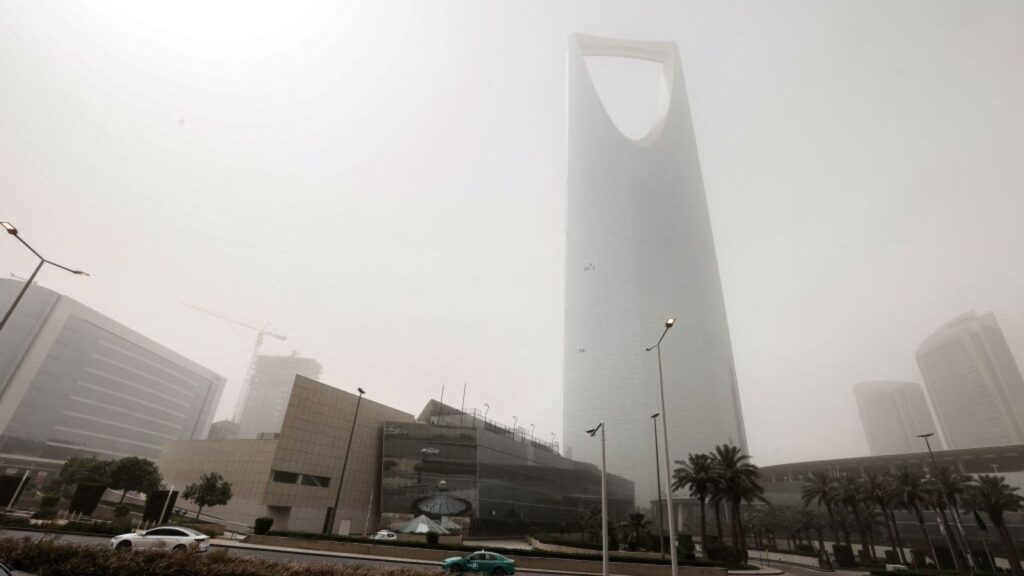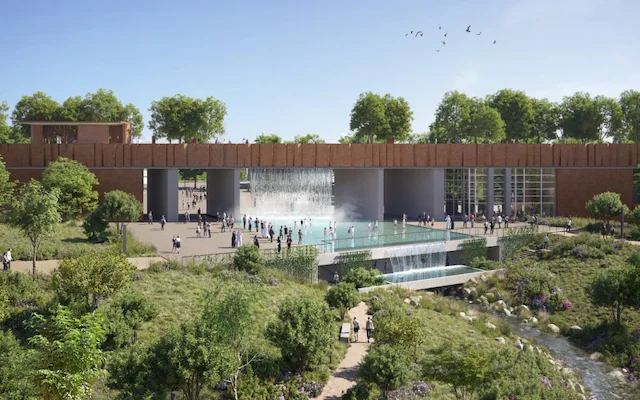As temperatures continue to rise across the Middle East, Saudi Arabia’s capital is taking bold steps to keep its people cool. Riyadh has officially launched its “Urban Cooling Zones” project — a pilot initiative designed to help residents stay safe and comfortable during extreme heatwaves.
These cooling zones, now live in selected areas, include high-tech misting systems, shaded walkways, and smart greenery that responds to the environment. This marks a major move in the city’s long-term vision to become more livable and climate-resilient.
A New Way to Keep Cities Cool
The concept of “urban cooling” may sound futuristic, but in Riyadh, it is already becoming a reality. The pilot project has turned key public areas into cool, walkable spaces — even when the sun is blazing overhead.
These zones feature advanced misting technologies that spray a fine, cool mist into the air. Combined with specially designed shades and trees that are chosen for their cooling effects, the result is a noticeable drop in temperature in these zones compared to nearby streets.
According to early reports, some areas have seen temperature reductions of up to 8 degrees Celsius, offering much-needed relief to pedestrians, street vendors, and outdoor workers.
Designed for People, Built for the Future

The Urban Cooling Zones are not just about comfort — they’re about survival. With summer temperatures in Riyadh often rising above 45°C (113°F), the risks of heat exhaustion, dehydration, and other heat-related illnesses are growing.
City planners have taken this challenge seriously, and the cooling zones are part of a broader strategy to adapt to climate change and improve urban life.
The project focuses on three main features:
- Misting Systems: These use minimal water but have a strong cooling effect, lowering air temperature and providing instant relief.
- Smart Shade Structures: Modern designs that offer shelter while blending into the city’s landscape.
- Responsive Greenery: Plants that are chosen for their ability to survive in extreme heat and improve air quality while also cooling their surroundings.
These components work together to create safe, inviting spaces for both residents and tourists.
Target Areas Get a Cool Makeover
The first phase of the cooling zones has been rolled out in busy pedestrian areas, outdoor markets, and popular gathering places. These locations were chosen because they attract large crowds and see high foot traffic even during hot afternoons.
Places like King Fahad Road, city parks, and parts of the Diplomatic Quarter have already received their cool-upgrades. People walking through these areas are now greeted with fine mist and shaded seating, making it possible to enjoy the outdoors even in peak summer.
The initiative also includes educational signs explaining how each part of the system works, encouraging public awareness about environmental responsibility and sustainable living.
Public Response Has Been Overwhelmingly Positive
Riyadh’s residents have been quick to share their appreciation for the new cooling zones. Many have taken to social media to post about how comfortable and futuristic the zones feel. Local families are now more likely to spend time outside, and small businesses in the area have reported a rise in customer visits.
“I used to avoid walking outside during the day,” said Huda Al-Mansour, a local shop owner. “But now, with the cooling zone in place, I can enjoy my walk to the store without feeling like I’m going to melt.”
Outdoor events and night markets have also seen increased attendance, thanks to the improved conditions.
A Model for Other Cities in the Region
Riyadh’s success with this project is gaining attention not just within Saudi Arabia but across the region. Cities in the Gulf, many of which face similar heat challenges, are watching closely. Urban planners and environmental experts are looking at Riyadh’s model as a blueprint for how to respond to rising temperatures.

This pilot may soon inspire cooling zone developments in places like Dubai, Doha, and Muscat, where heatwaves are becoming more frequent and intense.
By combining smart technology with sustainable design, Riyadh is proving that innovation can help solve real-world climate challenges.
Cooling the City Without Heating the Planet
What makes this initiative stand out is its focus on sustainability. While many cooling solutions rely on air conditioning, which uses large amounts of energy and can contribute to greenhouse gas emissions, Riyadh’s approach is far more eco-friendly.
The misting systems are energy-efficient and use recycled water, while the shade structures and greenery do not require high power to maintain. In fact, many of the smart shades are made with solar-powered materials and are designed to collect data on temperature and air quality in real time.
This data will be used by city officials to improve future cooling zones and monitor the project’s long-term success.
The Vision Ahead: Expanding Cooling Zones Citywide
This is just the beginning. The Urban Cooling Zones are part of Riyadh’s broader goals under Vision 2030, a national development strategy that includes improving quality of life, supporting public health, and adapting to environmental challenges.
City officials have confirmed that if the pilot continues to deliver strong results, more neighborhoods and public spaces will receive cooling installations in the coming years.
There are even discussions about integrating cooling features into public transport stops, schools, and walking paths, making the entire city more accessible and comfortable year-round.
A Small Step With a Big Impact
While climate change can feel like an overwhelming issue, projects like Riyadh’s Urban Cooling Zones show that cities can take action today to protect their residents. By rethinking how we design public spaces, urban areas can become more resilient — even in the face of extreme weather.
Riyadh’s cool move is more than just a relief from the heat — it’s a bold vision for a healthier, smarter city.
Let me know if you’d like to add quotes from officials, visuals, or stats in infographic style.
4o



